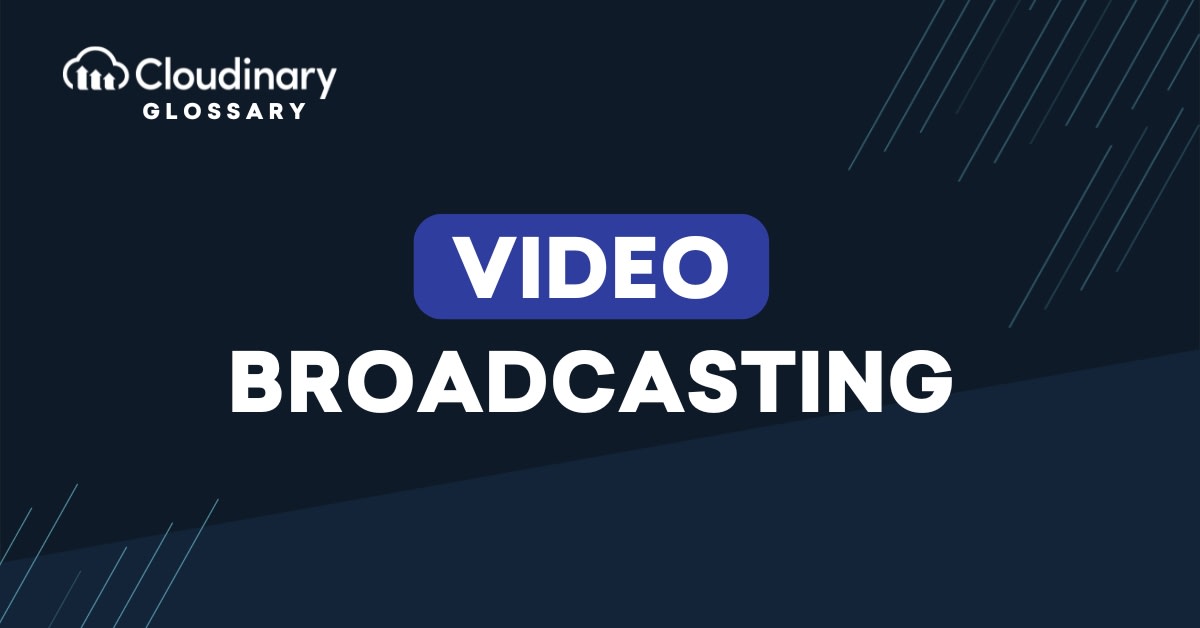
What Is Video Broadcasting?
Video broadcasting is the simultaneous delivery of video content to multiple viewers through different platforms. Historically tied to traditional television and radio transmission, broadcasting has evolved significantly with the advent of the internet and digital technology. Today, it includes live streaming, webcasting, and over-the-top video (OTT) services, among others.
Broadcasting uses techniques to transmit video and audio content in real-time, enabling people to watch events, shows, or live performances regardless of geographical location. Whether it’s live sports, a global news event, or a corporate webinar, video broadcasting is the backbone of modern media delivery.
How Does Video Broadcasting Work?
Video streaming is the primary method of delivering broadcast content over the internet. Unlike downloading, where files are stored locally before viewing, streaming allows viewers to interact with media instantly as it’s transmitted over the web. Here’s a breakdown of how it works:
Steps in Video Streaming
- Content Encoding: Raw video files are converted into digital formats like MP4, H.264, or others optimized for transmission. Video codecs compress the data without significantly compromising quality.
- Data Transmission: The encoded content is sent to a server or cloud platform, which prepares it for distribution to viewers.
- Adaptive Streaming: Services often use adaptive bitrate streaming (ABR), which adjusts the quality of video playback based on the viewer’s internet connection.
- Device Decoding: At the viewer’s end, the device (smartphone, computer, TV) decodes the data into a playable format, allowing seamless playback in real-time.
Streaming relies on protocols like HTTP Live Streaming (HLS) or Real-Time Messaging Protocol (RTMP) to transfer audio and video data efficiently.
Types of Video Broadcasting
There are several types of video broadcasting designed to suit different purposes and scenarios. Here’s a look at the most prominent types:
- Live Streaming: Real-time broadcast where events are shared as they happen, such as live concerts, sports, webinars, or influencers creating live content.
- Webcasting: Broadcast content delivered specifically over the internet, such as company presentations or online tutorials.
- Over-the-Top (OTT) Broadcasting: Services like Netflix or Disney+ deliver video content directly to viewers, bypassing traditional cable or satellite providers.
- Simulcasting: Content is simultaneously broadcast across multiple platforms (e.g., social media, websites, apps) to maximize reach.
- Interactive Broadcasting: This form allows viewers to engage actively during the broadcast via polls, quizzes, or live Q&A sessions.
- On-Demand Broadcasting: Pre-recorded content made available for viewers to access at any time, such as YouTube videos.
The Bottom Line
Video broadcasting has become a cornerstone of modern media, enabling content creators, businesses, entertainers, and institutions to reach audiences in an interconnected, globalized world. Through processes like video streaming, broadcasting simplifies how media is shared, providing instant access to live or on-demand content without the need for extensive infrastructure.
Whether you’re conducting a virtual seminar, hosting a live event, or promoting your brand, video broadcasting is an invaluable tool for growing your reach and engagement. With various broadcasting types available from live streams to OTT distribution, there’s a solution for every scenario.


